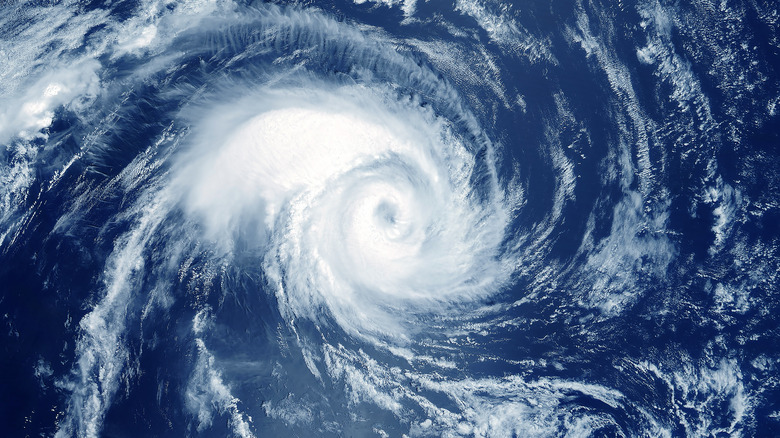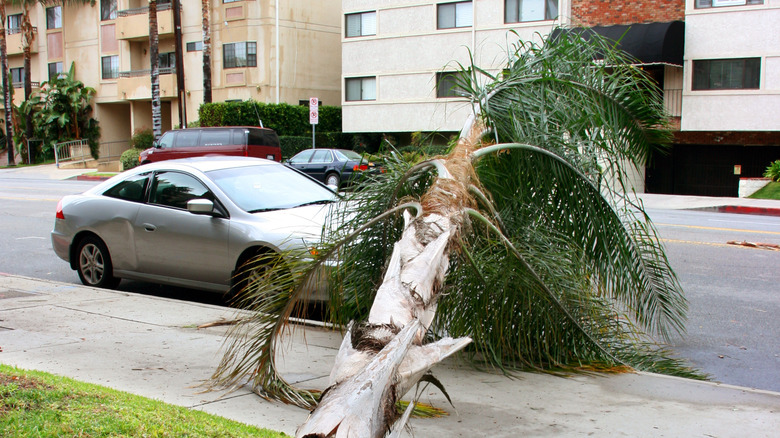What Is A Bomb Cyclone?
While some areas may be less affected than others, sudden changes in the atmosphere cause devastating damage to virtually any location on Earth. The hurricanes which regularly affect the Caribbean and eastern North American coast, for instance, are a type of tropical cyclone that can have wildly varying trajectories. They stem from warm air in the western Atlantic rising and being supported by cooler air below. This process creates storms that build up energy as they pass over the warmer water of the east. These can transition into hurricanes once their energy is built up enough that wind speeds of 74 mph or more develop (via Ocean Service).
Tropical cyclones have been studied for over 200 years in order to anticipate and minimize their effects. Yet they are not the only type of storm capable of such destruction. Extratropical cyclones usually occur in the northern hemisphere, and can similarly cause massive amounts of destruction in a very short period of time. One of the worst to affect America in recent history was a type known as a "bomb cyclone," which can build up the power of a tropical hurricane within a day (via NBC).
Bomb cyclones can be as deadly as hurricanes, but with almost no warning
Extratropical cyclones tend to resemble tropical hurricanes in shape as they travel along what are called atmospheric rivers — river-like wind currents that travel through the atmosphere. They often produce comparatively mild conditions such as cold fronts, mild rainstorms, and blizzards (via Fox News). However, even slight contact with warmer tropical air can cause the storm's internal pressure to drop. When this happens the cyclone's wind speeds will increase to hurricane-levels in as little as a single 24-hour period (via USA Today).
For reference, a tropical hurricane can be predicted anywhere from several days to over a week in advance, providing at least some warning of its deadly consequences (via NOAA). A bomb cyclone thus gives almost no time to prepare, which is especially dangerous as they often form in areas that don't usually expect this kind of weather. In the recent 2021 cyclone that hit the American West Coast, two people were killed in the Seattle area, while thousands across the west coast, from California to Washington, were left without power (via The Register-Guard).

